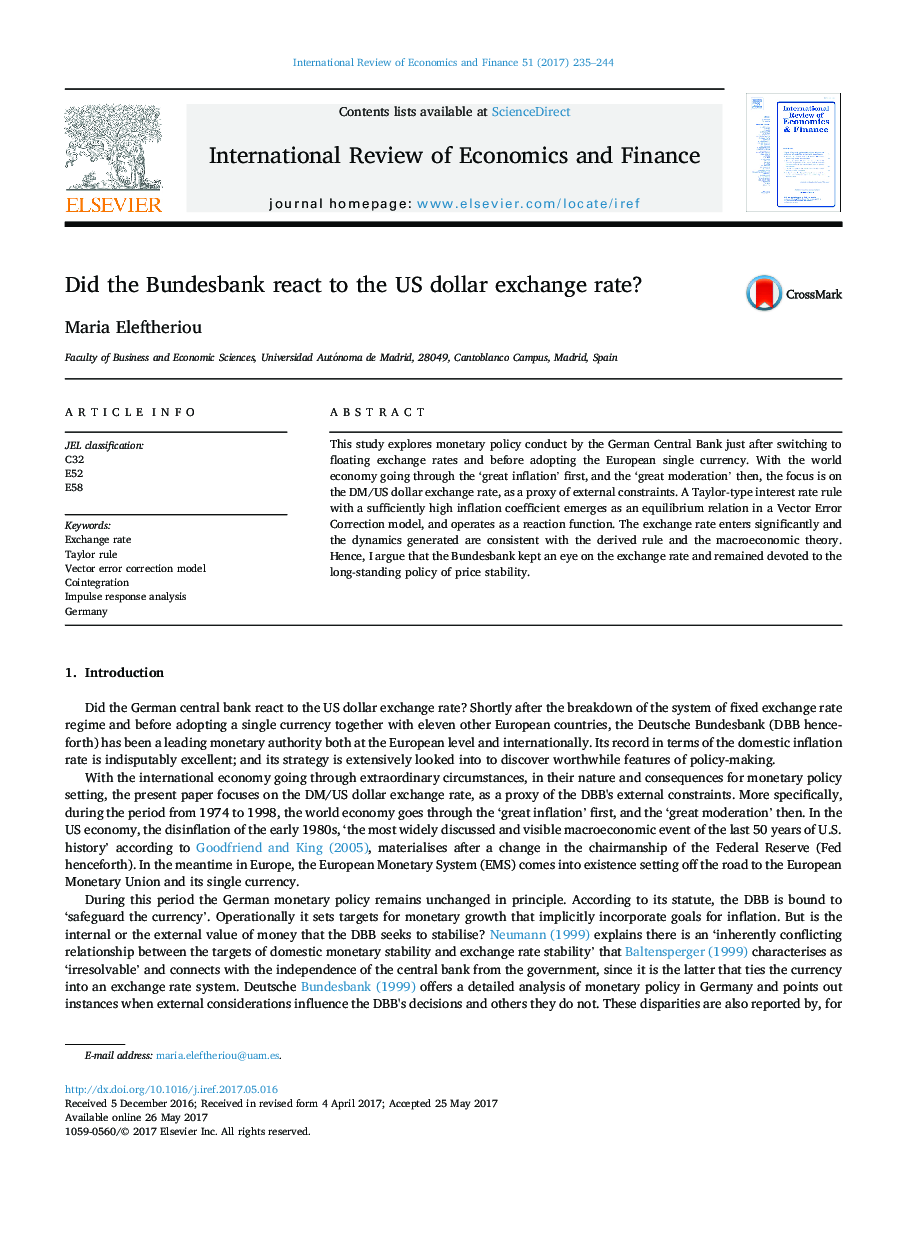| Article ID | Journal | Published Year | Pages | File Type |
|---|---|---|---|---|
| 5083027 | International Review of Economics & Finance | 2017 | 10 Pages |
This study explores monetary policy conduct by the German Central Bank just after switching to floating exchange rates and before adopting the European single currency. With the world economy going through the 'great inflation' first, and the 'great moderation' then, the focus is on the DM/US dollar exchange rate, as a proxy of external constraints. A Taylor-type interest rate rule with a sufficiently high inflation coefficient emerges as an equilibrium relation in a Vector Error Correction model, and operates as a reaction function. The exchange rate enters significantly and the dynamics generated are consistent with the derived rule and the macroeconomic theory. Hence, I argue that the Bundesbank kept an eye on the exchange rate and remained devoted to the long-standing policy of price stability.
